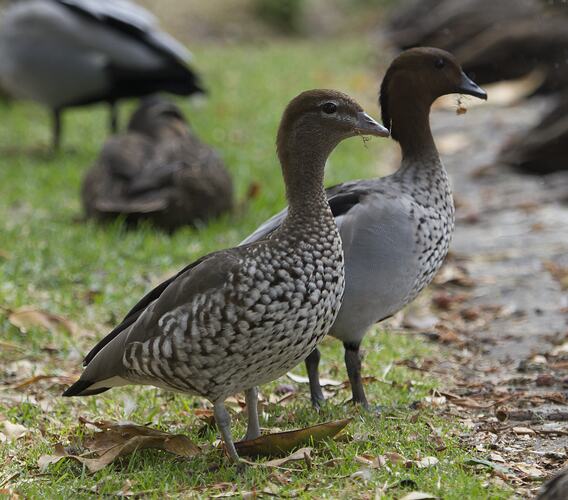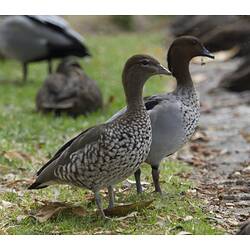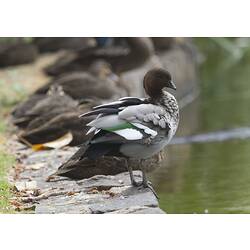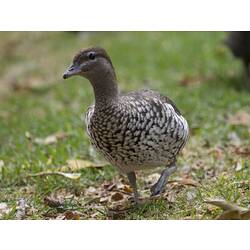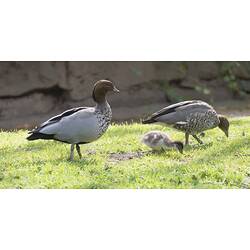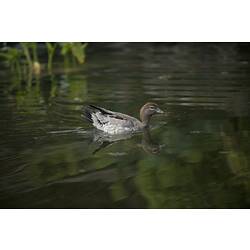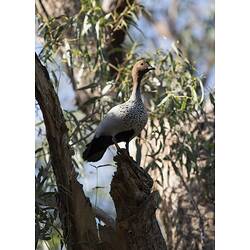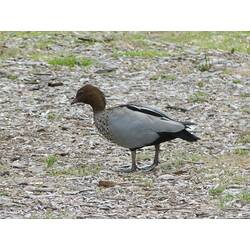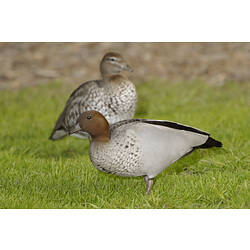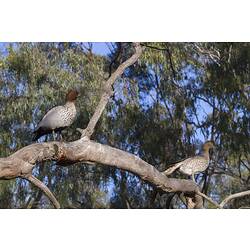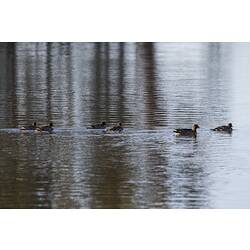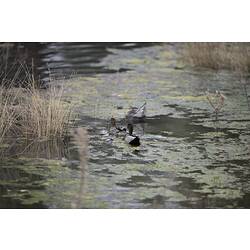General Description
The body is grey with brown mottling on the breast and some black in the wings and on the lower belly. Underside of tail black (male) or white (female). Females have a white line above and below each eye, with the brown mottling on the breast continuing to the belly. Males have a brown head and neck with a short mane of dark feathers at the back (the other common name for this species is 'Maned Duck'). The bill small and grey. Bill to tail length is up to 50 cm.
Biology
Wood Ducks spend most of their time on land that is near water rather than on the water itself. They feed by grazing on grass and other green herbage and also chase after insects. If disturbed, they fly to the nearby water for safety. Wood Ducks lay their eggs in a tree hollow, preferring a live tree adjacent to water. When nesting, they often perch on tree branches. The clutch size is usually eight to ten eggs. Once hatched, the ducklings jump out of the tree hollow en masse and 'parachute' down to the ground with their feet and wings out to slow their fall. Their parents then gather them up and take them to feed.
Distribution
Eastern and south-western mainland Australia and Tasmania.
Habitat
Freshwater wetlands, grasslands and lightly wooded areas.
More Information
-
Animal Type
-
Animal SubType
-
Brief Id
A grey and brown duck with small dark spots on breast, an upright stance and a small bill. Often seen grazing on land rather than feeding in the water.
-
Colours
Grey, Brown
-
Maximum Size
50 cm
-
Habitats
Wetland, Urban, DryForest, WetForest, Woodland, Mallee, Grassland
-
Diet
Herbivore
-
Endemicity
-
Commercial
No
-
Conservation Statuses
CITES: Not listed, FFG Threatened List: Not listed, EPBC Act 1999: Not listed, IUCN Red List: Least Concern
-
Taxon Name
-
Common Name
Wood Duck
-
Other Names
Maned Duck
-
Kingdom
-
Phylum
-
Subphylum
-
Class
-
Subclass
-
Order
-
Family
-
Subfamily
-
Genus
-
Species Name
jubata
